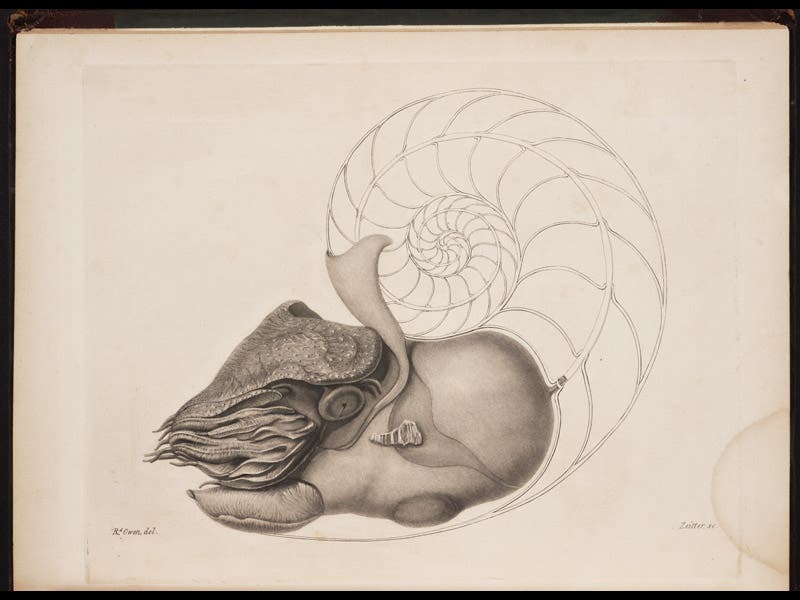Scientist of the Day - George Bennett
George Bennett, an English/Australian naturalist, was born Jan. 31, 1804. Bennett got the travel bug early, sailing to Sri Lanka and Mauritius before he was 15. He came back to London long enough to study medicine in London, where he became friends with the future comparative anatomist Richard Owen, also just starting his career. Bennett soon set out again, this time for New Zealand and Australia, where he caught the first pearly nautilus ever captured alive (by a European). He returned to London for a year and presented his prize specimen to Owen, who wrote a memoir on it in 1832 and credited Bennett with supplying the specimen (second image).
Bennett then returned to Australia for two more years, where he made his big coup: he captured four live platypus specimens, digging them out of their burrows. Up to this point, the platypus was known only through dead and stuffed specimens, and there was a lively debate about whether the animal was viviparous or laid eggs. Bennett tried to keep his platypuses alive; however, they all eventually expired. But they proved informative even in death. Three of Bennett's specimens were females, and two of them had eggs in the uterus. Bennett sent the specimens to Owen, and the debate was over--some mammals did lay eggs after all.
Bennett published an article on the platypus in 1835; you can see his own drawing from that article of the body postures of a live platypus above (third image). Bennett later published a book about his travels, Gatherings of a Naturalist in Australasia (1860), a handsome production with several hand-colored lithographs that are quite attractive. They depict an Australian stork (fourth image, but not a jabiru, as the caption says); a Portuguese man-o’-war (fifth image); a dwarf cassowary that Bennett discovered, now also called Bennett’s cassowary (sixth image); and, of course, a pair of cavorting platypuses (first image). These illustrations were drawn on stone by one of the best lithographers in Victorian England, Joseph Wolf, who was our Scientist of the Day three years ago, on Jan. 22, 2015.
Dr. William B. Ashworth, Jr., Consultant for the History of Science, Linda Hall Library and Associate Professor, Department of History, University of Missouri-Kansas City. Comments or corrections are welcome; please direct to ashworthw@umkc.edu.












